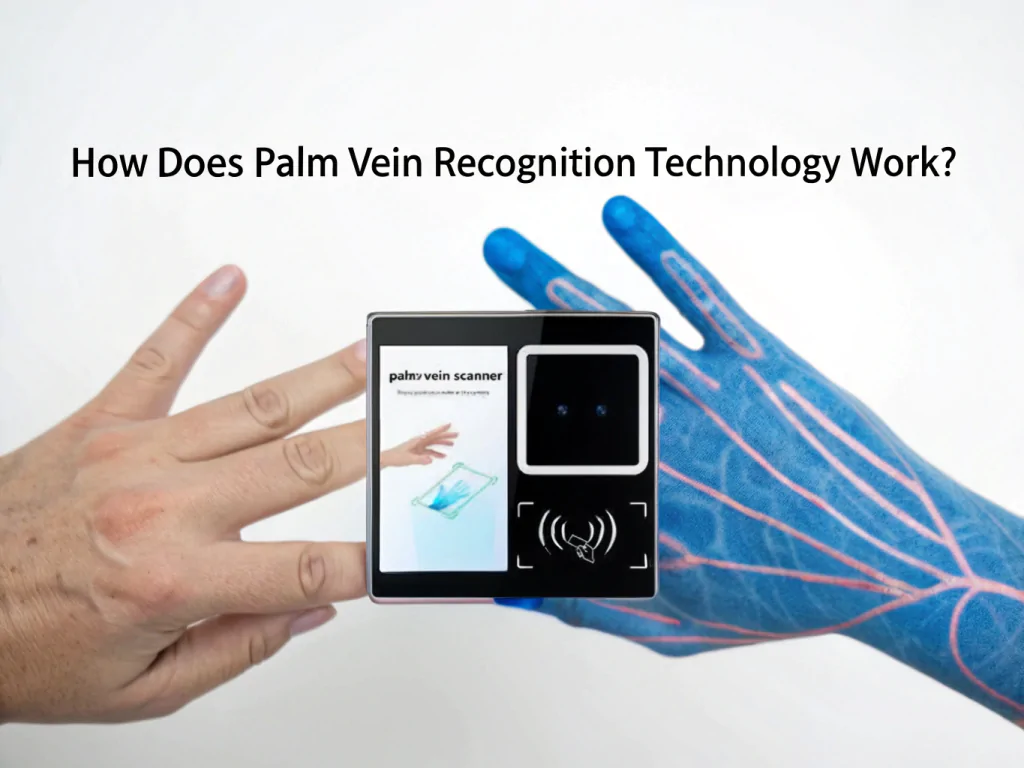Have you ever wondered how your palm could be used for security? Palm vein recognition uses a unique method to verify your identity. It’s fast, secure, and gaining popularity in industries like healthcare and security. But how does it actually work?
Palm vein recognition uses near-infrared light to scan your palm and map your veins. This unique vein pattern becomes a digital signature for authentication. It’s highly secure and difficult to replicate.

Let’s dive deeper into this technology and understand why it’s so effective for identity verification.
Table of Contents
- How Does Palm Scanning Work?
- What Makes Palm Vein Recognition Secure?
- How Does Palm Print Recognition Work?
- How Does Vein Visualization Technology Work?
- How Accurate Are Palm Scanners?
- Disadvantages of Palm Vein Technology
- Palm Vein Scan vs Fingerprint: Which Is Better?
- Biometric Palm Scanners in Healthcare and Security
- Summary
How Does Palm Scanning Work?
When I first encountered palm vein recognition, I was intrigued by how simple yet secure it seemed. Palm scanners use near-infrared light to create an image of the veins in your hand. This method is both accurate and difficult to fake.
Palm scanning works by shining near-infrared light on your palm. The light is absorbed by the veins, and the pattern is turned into a digital template for identification. This method is highly secure and precise.
When I used a palm vein scanner for the first time, I was amazed at how quickly it identified me. It only takes a moment to scan, and the system compares the vein pattern to existing records. If the match is found, access is granted. This process is far more accurate than other biometric methods, like fingerprints or retina scans, which can be easier to spoof.
What Makes Palm Vein Recognition Secure?
One thing that makes palm vein recognition so reliable is that the vein pattern is unique to each person and hard to duplicate. It’s also located beneath the skin, unlike fingerprints, which can be lifted and faked.
| Feature | Palm Vein Scanning | Fingerprint Scanning |
|---|---|---|
| Location | Beneath the skin | Surface of the skin |
| Spoofing Resistance | High | Low |
| Speed of Authentication | Fast | Moderate |
| Application | High-security areas | General use |
How Does Palm Print Recognition Work?
Palm print recognition is another way to verify your identity. It’s similar to fingerprint scanning but uses the whole palm. This method is often used in law enforcement and other security applications.
Palm print recognition works by analyzing the friction ridges on your palm, much like fingerprints do. It’s less secure than palm vein scanning because prints can be lifted and copied.
I’ve worked with palm print scanners in some security settings. The process is quite similar to fingerprint scanning, where the friction ridges on the palm are analyzed. However, because palm prints are on the surface, they can be copied. So, while this method is still useful, it’s not as foolproof as palm vein recognition.
How Does Vein Visualization Technology Work?
Vein visualization technology is what makes palm vein recognition possible. It uses infrared light to create an image of your veins, which is then analyzed for authentication.
Vein visualization uses infrared light to highlight the veins in your palm. Hemoglobin absorbs this light differently than the surrounding tissue, creating a detailed image. This image is then digitized for secure identification.
In my experience with palm vein scanners, the vein visualization process was incredibly quick. The infrared light shines on your palm, and a device captures the unique vein patterns. It’s non-invasive, fast, and accurate. This technology ensures that even small variations in your veins—such as those caused by age or injury—are detected, making it a highly reliable option for identity verification.
How Accurate Are Palm Scanners?
Palm scanners are incredibly accurate, with lower error rates than other biometric systems. In fact, they’re so reliable that even slight changes in vein structure due to age or injury are accounted for.
Palm vein scanners are known for their accuracy. The unique vein patterns are difficult to replicate, and the technology adapts to changes over time. This makes it a highly reliable choice for secure authentication.
What really impressed me about palm vein scanners is their ability to detect even the smallest changes. If your veins change over time, due to aging or an injury, the system can still accurately match your pattern to your stored data. This ability to adapt ensures that you remain securely identified no matter what changes occur.
Disadvantages of Palm Vein Technology
While palm vein recognition is impressive, it does come with some downsides. The technology is costly, and implementing it requires specialized hardware. These factors can be a barrier for smaller businesses.
The high cost of palm vein technology is a major limitation, along with the need for specific hardware. These factors can make it challenging to implement, especially for smaller companies or institutions.
When I looked into implementing palm vein scanners at my workplace, I realized that the costs can quickly add up. The scanners themselves aren’t cheap, and the required infrastructure adds to the total expense. For small businesses, this might be too much of a financial burden. However, the level of security it offers can be well worth the investment in high-stakes environments.
Palm Vein Scan vs Fingerprint: Which Is Better?
If you’re trying to decide between palm vein scanning and fingerprint recognition, there are some important differences to consider. In terms of security and accuracy, palm vein scanning is generally the better option.
Palm vein recognition is more secure and accurate than fingerprint scanning. This is because vein patterns are internal, making them harder to replicate or spoof.
In my opinion, palm vein scanning beats fingerprint recognition in most high-security applications. Fingerprints can be lifted and copied, which makes them easier to fake. In contrast, palm vein patterns are hidden under the skin, making them much harder to replicate. The accuracy of palm vein scanning is also superior, reducing the chance of false positives or negatives.
Biometric Palm Scanners in Healthcare and Security
Palm vein recognition is increasingly used in both healthcare and security, offering a fast and reliable method of identity verification.
Biometric palm scanners are used in healthcare for patient identification and in security systems for access control. These scanners provide an easy and highly secure way to verify identity.
I’ve seen palm vein scanners used in healthcare settings to verify patient identities. This is especially useful in preventing medical errors and fraud. In high-security areas, these scanners can be used for secure access, ensuring that only authorized personnel can enter restricted zones.
Summary
Palm vein recognition is a powerful technology that offers superior security and accuracy. While the costs may be high, its ability to accurately authenticate identity makes it a valuable tool in both healthcare and security settings.



